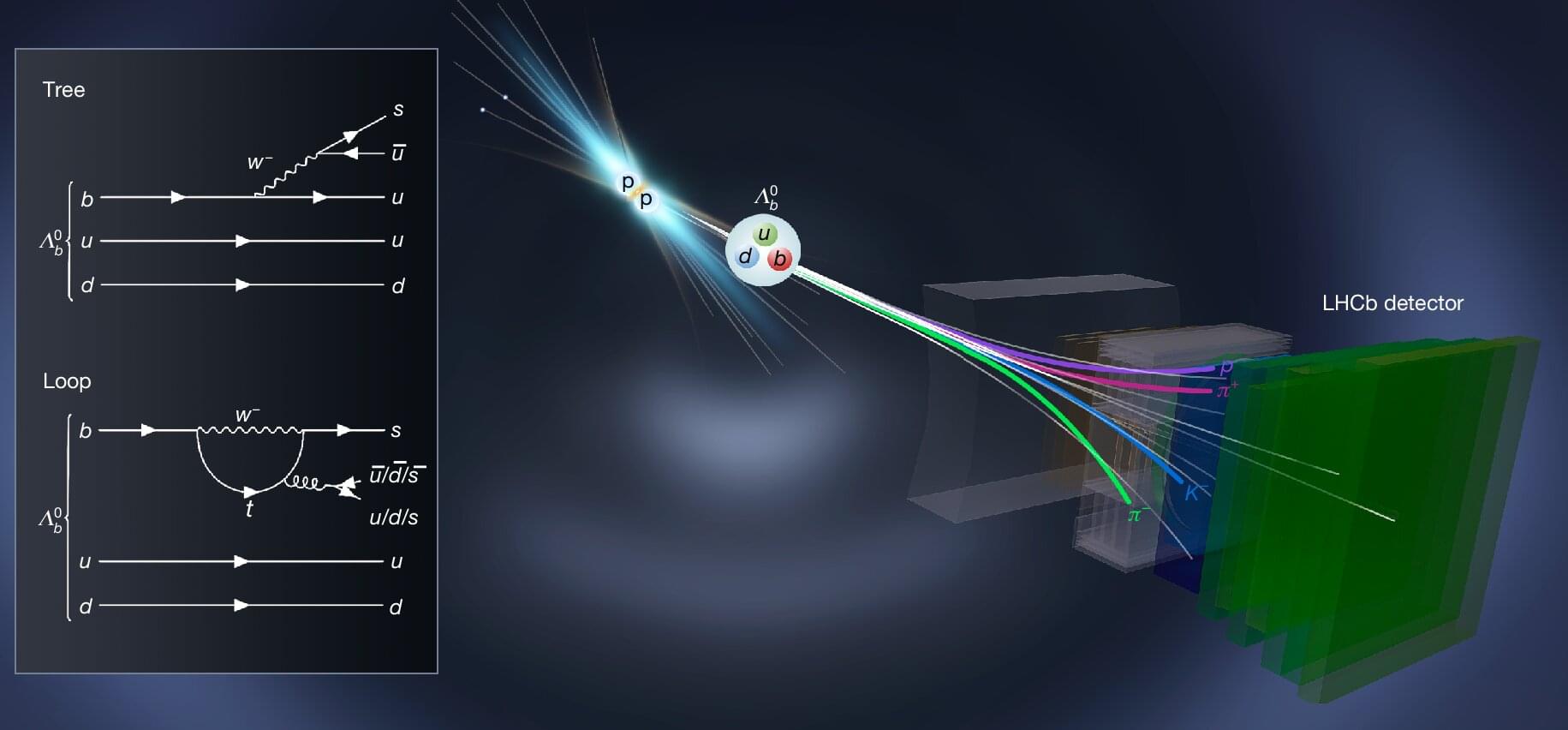The first-known observations of matter–antimatter asymmetry in a decaying composite subatomic particle that belongs to the baryon class are reported from the LHCb experiment located at the Large Hadron Collider at CERN. This effect, known as charge–parity (CP) violation, has been theoretically predicted, but hitherto escaped observation in baryons. The experimental verification of this asymmetry violation in baryons, published in Nature this week, is important as baryons make up most of the matter in the observable universe.
Cosmological models suggest that matter and antimatter were created in equal amounts at the Big Bang, but in the present-day universe matter seems to dominate antimatter. This imbalance is thought to be driven by differences in the behavior of matter and antimatter: a violation of symmetry known as CP violation.
This effect has been predicted by the Standard Model of physics and observed experimentally in subatomic particles called mesons more than 60 years ago, but never previously observed in baryons. As opposed to mesons, which are formed by two quarks, baryons are formed by three quarks—particles that make up most of matter such as neutrons and protons are baryons.
